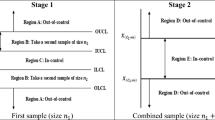Abstract
Preparing a schedule for physicians in the emergency room is a complex task, which requires taking into account a large number of (often conflicting) rules, related to various aspects: limits on the number of consecutive shifts or weekly hours, special rules for night shifts and weekends, seniority rules, vacation periods, individual preferences, ... In this paper, we present a mathematical programming approach to facilitate this task. The approach models the situation in a major hospital of the Montréal region (approximately 20 physicians are members of the working staff). We show that the approach can significantly reduce the time and the effort required to construct a six-month schedule. A human expert, member of the working staff, typically requires a whole dedicated week to perform this task, with the help of a spreadsheet. With our approach, a schedule can be completed in less than one day. Our approach also generates better schedules than those produced by the expert, because it can take into account simultaneously more rules than any human expert can do.
Similar content being viewed by others
References
American College of Emergency Physicians, Directory of software in emergency medicine, Dallas (1998) (http://www.acep.org).
H. Beaulieu, Planification de l'horaire des médecins dans une salle d'urgence, M.Sc. Thesis, Département d'informatique et de recherche opérationnelle, Université de Montréal (1998).
H. Beaulieu, J.A. Ferland, B. Gendron and L. Lefebvre, A computer system based on optimization for scheduling physicians in the emergency room, Publication #1127, Département d'informatique et de recherche opérationnelle, Université de Montréal (1998).
I. Berrada, Planification d'horaires du personnel infirmier dans un établissement hospitalier, Ph.D. Dissertation, Département d'informatique et de recherche opérationnelle, Université de Montréal (1993).
I. Berrada, J.A. Ferland and P. Michelon, A multi-objective approach to nurse scheduling with both hard and soft constraints, Socio-Economic Planning Science 30 (1996) 183–193.
ByteBloc Software, EPSKED 3.0, ByteBloc Software, LongBeach (1995) (http://www.bytebloc.com).
CPLEX Optimization, CPLEX 4.0, CPLEX Optimization, Incline Village (1994).
É. Gagné, Application d'une méthode exacte pour la génération d'horaires en soins infirmiers, M.Sc. Thesis, Département d'informatique et de recherche opérationnelle, Université de Montréal (1996).
R. Hung, Hospital nurse scheduling, Journal of Nursing Administration 25 (1995) 21–23.
B. Jaumard, F. Semet and T. Vovor, A generalized linear programming model for nurse scheduling, Publication G-96-35, Groupe d'études et de recherche en analyse des décisions, École des Hautes Études Commerciales, Montréal (1997).
S. Labbé, La confection automatisée d'horaires pour les médecins en salle d'urgence, M.Sc. Thesis, École des Hautes études Commerciales, Montréal (1998).
S. Labbé, M. Gendreau, S. Lapierre and P. Soriano, A tabu search for scheduling physicians, Presented at INFORMS, Montréal, April 26-29, 1998.
S.D. Lapierre and M.W. Carter, Scheduling emergency room physicians, Publication CRT-99-23, Centre for Research on Transportation, Université de Montréal (1999).
H.E. Miller, W.P. Pierskalla and G.J. Rath, Nurse scheduling using mathematical programming, Operations Research 24 (1976) 857–870.
MSI Software, Physician Scheduler 3.2, MSI Software, Fairfax (1998) (http://www.msisoftware.com).
I. Nabli, Horaires du personnel infirmier générés avec approches heuristiques, M.Sc. Thesis, Département d'informatique et de recherche opérationnelle, Université de Montréal (1995).
G.L. Nemhauser and L.A. Wolsey, Integer and Combinatorial Optimization (Wiley, New York, 1988).
W.P. Pierskalla and D.J. Brailer, Applications of Operations Research in health care delivery, in: Handbooks in Operations Research and Management Science, Vol. 6, eds. S.M. Pollock et al. (North-Holland, 1994).
R.L. Rardin, Optimization in Operations Research (Prentice-Hall, NJ, 1998).
L.D. Smith and A. Wiggins, A computer based scheduling system, Computers and Operations Research 4 (1977) 195–212.
G. Vassilacopoulos, Allocating doctors to shifts in an accident and emergency department, Journal of the Operational Research Society 36 (1985) 517–523.
S. Villeneuve, Confection d'horaires en soins infirmiers pour les in-firmières des équipes volantes-secteur, M.Sc. Thesis, Département d'informatique et de recherche opérationnelle, Université de Montréal (1997).
D.M. Warner, Scheduling nursing personnel according to nursing preference: a mathematical programming approach, Operations Research 24 (1976) 842–856.
G. Weil, K. Heus, P. François and M. Poujade, Constraint programming for nurse scheduling, Engineering in Medicine and Biology 14 (1995) 417–422.
Author information
Authors and Affiliations
Rights and permissions
About this article
Cite this article
Beaulieu, H., Ferland, J.A., Gendron, B. et al. A mathematical programming approach for scheduling physicians in the emergency room. Health Care Management Science 3, 193–200 (2000). https://doi.org/10.1023/A:1019009928005
Issue Date:
DOI: https://doi.org/10.1023/A:1019009928005




